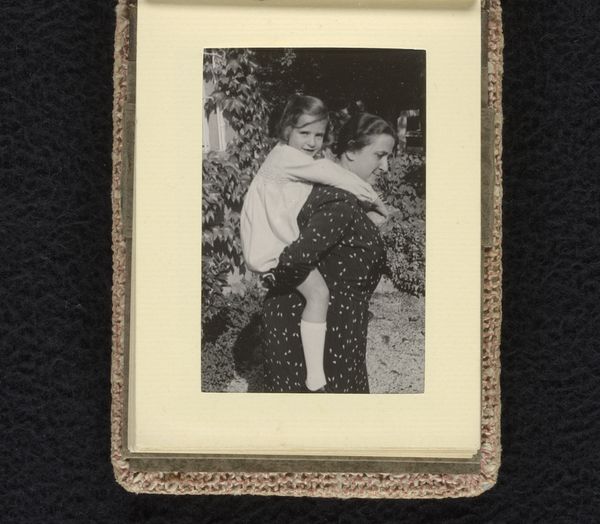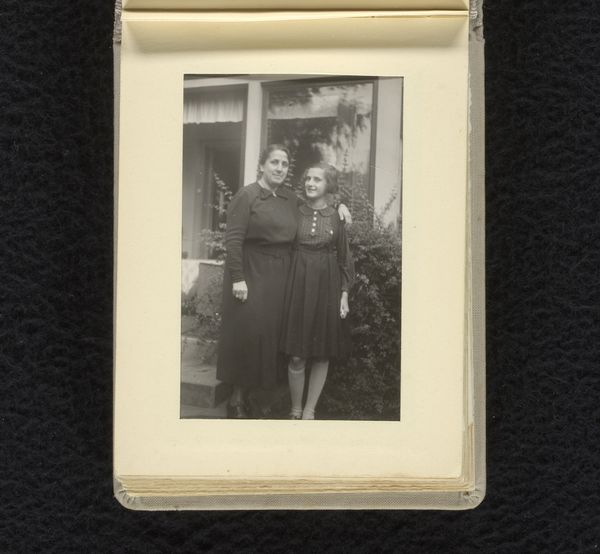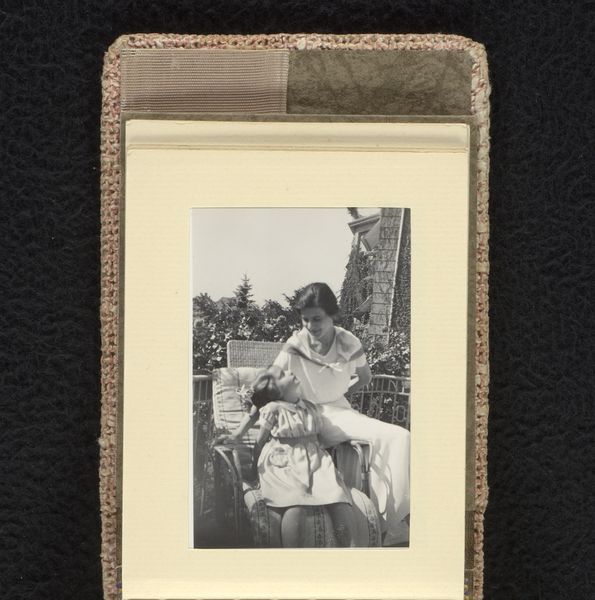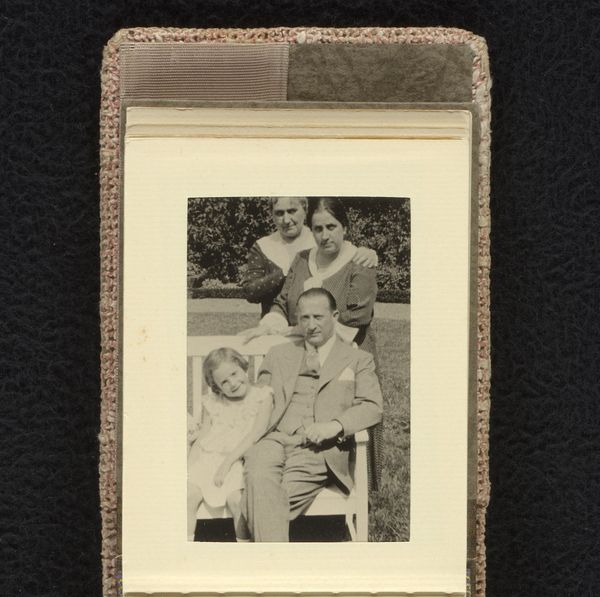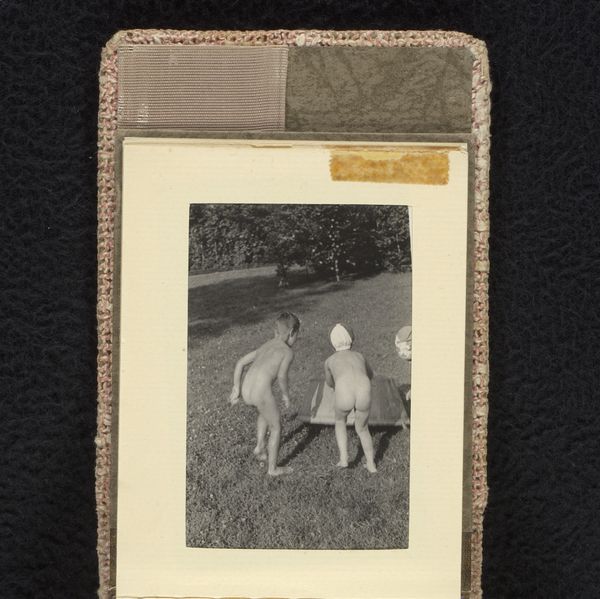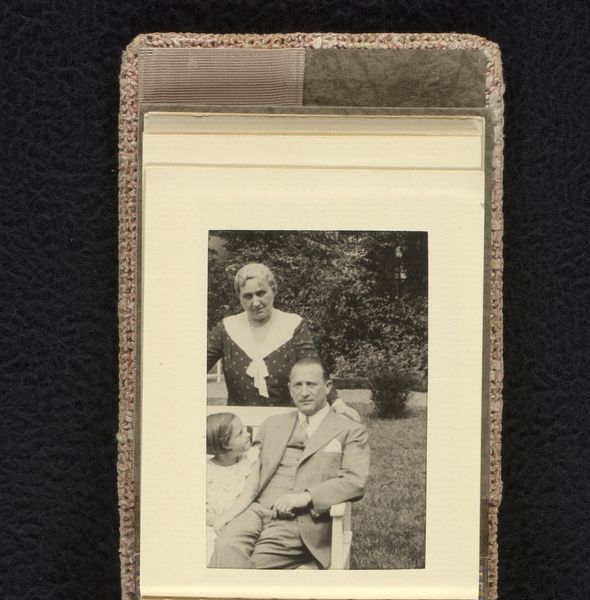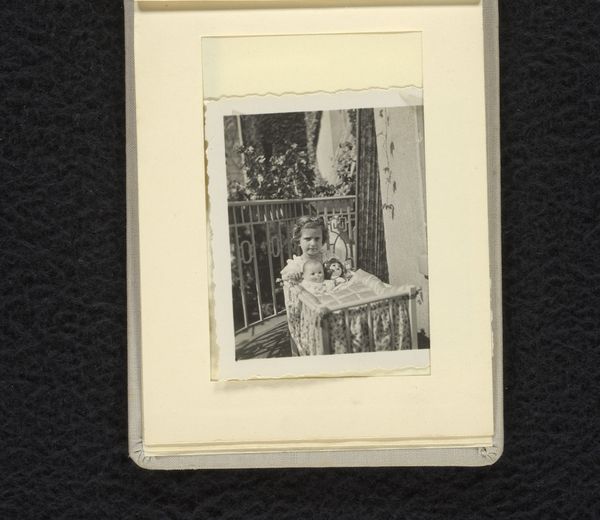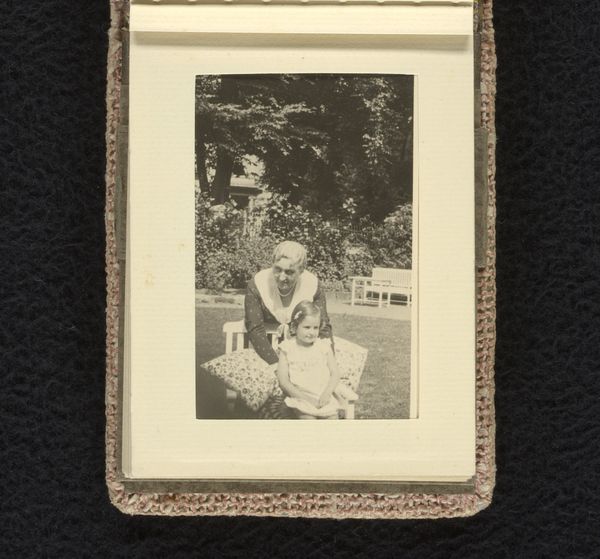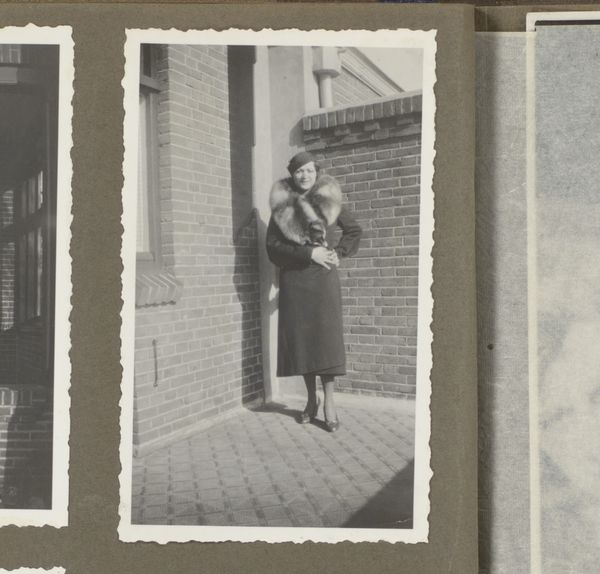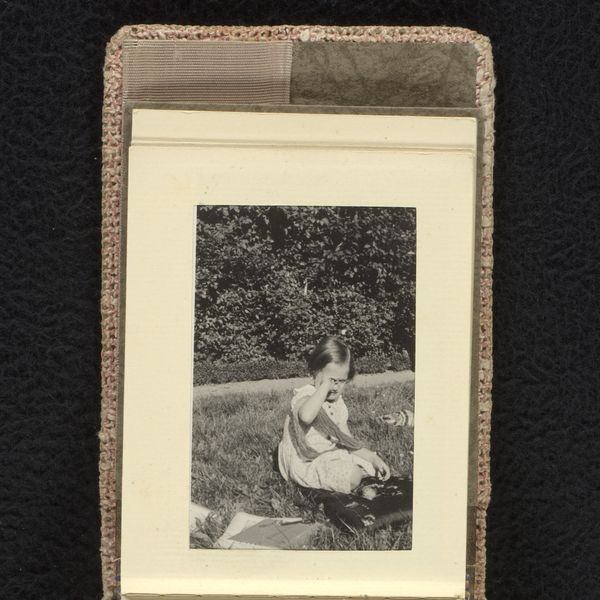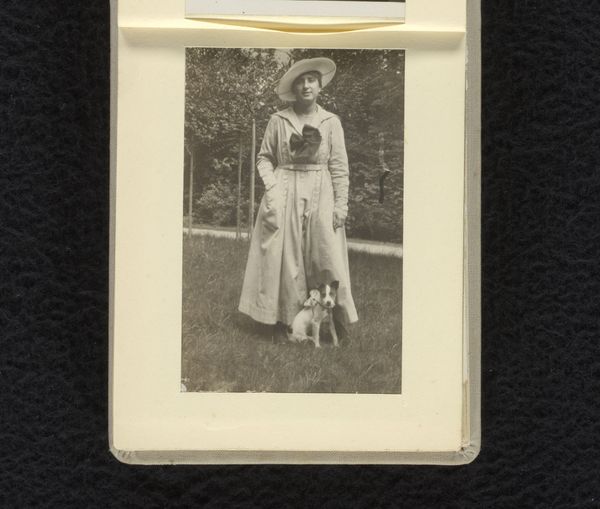
Isabel Wachenheimer kijkt naar haar moeder Else Wachenheimer-Moos in de tuin, 1933-1937, Stuttgart c. 1933 - 1937
0:00
0:00
photography
#
portrait
#
photography
#
genre-painting
Dimensions: length 110 mm, width 80 mm, height 84 mm, width 60 mm, height 81 mm, width 107 mm
Copyright: Rijks Museum: Open Domain
Editor: This is a photograph entitled "Isabel Wachenheimer kijkt naar haar moeder Else Wachenheimer-Moos in de tuin, 1933-1937, Stuttgart". It seems to be a family snapshot, printed in black and white. I'm struck by the details in the clothing – the textures feel so immediate. What catches your eye in this piece? Curator: It's a seemingly simple image, but what's fascinating is the context of its production. This isn't just a photograph; it’s an artifact of a specific historical moment and social class. The quality of the print, the clothing, even the garden setting, all speak to the material conditions of this family during the 1930s. Editor: You're focusing on the everyday life represented, instead of artistic vision. Curator: Precisely. Photography at this time was becoming increasingly accessible, offering a new medium for families to document their lives. The act of taking this picture becomes significant – it's a family preserving a moment, using technology of their time, in a society undergoing major changes. Consider the materials, too: the photographic paper, the dyes used in printing. These weren’t neutral, they were produced within a specific economic system, consumed, and now hold meaning. Editor: So you’re seeing it less as a composed portrait, and more as documentation of the everyday, created with materials of a certain value. How would this image relate to photography produced elsewhere at the same time? Curator: Comparing it to other photographic practices – say, photojournalism or fine art photography – would highlight the specific social function it served within the Wachenheimer family. Were they aware of photographic trends at the time? Was it a new technology to them? How did materials, and availability of such influence choices? Ultimately, this ordinary object gives access to unique clues of that time. Editor: I hadn’t considered how much the materiality and social context informed this simple image. Thanks, I’ll definitely look at photography differently now! Curator: Absolutely! Thinking about materials always opens up richer levels of engagement.
Comments
No comments
Be the first to comment and join the conversation on the ultimate creative platform.
